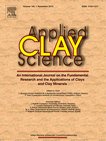 |
C. Barata, F. Rocha, A. J. Cruz, S. Andrejkovicová, S. Reguer, "Synchrotron X-ray diffraction of bole layers from Portuguese gilded baroque retables", Applied Clay Science, 116–117, 2015, pp. 39-45, doi:10.1016/j.clay.2015.08.012 |
| Abstract |
Studies based on a scientific approach to materials and techniques used in Portuguese gilded retables from the Baroque are very scarce and focus particularly on works with erudite features and on the characterization of the superficial gold leaf. The conservation and appearance of gilded surfaces, however, depended on the qualities of the clayey ground layer underneath, which is the bole. Colour and texture are closely related to its mineralogical composition. Boles were healing clays. Red to orange varieties could also be used for gilding, usually agglutinated with animal glue when the gold surface was meant to be burnished. Armenian was the name used to identify the best quality material. Microsamples collected from erudite and popular gilded retables, respectively belonging to the city of Oporto and its rural surroundings, were selected for elemental and mineralogical characterization. It was intended to shed light on the characteristics of boles used in Portuguese retables and to understand if there are any differences between materials used in works of distinct artistic quality. Elemental analysis was performed through SEM–EDS. SR-XRD was used for phase identification, performed with a six-circle diffractometer at the DIFFABS beamline of SOLEIL Synchrotron. Portuguese clay standards of identifiable composition and provenance were also analysed. The results suggest that boles are mainly kaolinitic, with variable amounts of illite and smectite. Gypsum was used as an extender. Although the proportions of the main clay minerals are similar in erudite and popular works, in Oporto homogeneity is clearly higher. |
